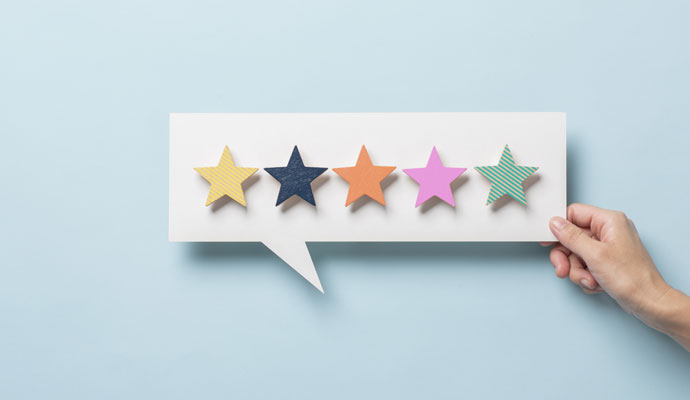Forget B2C and B2B — We Need B2I
In the fast-approaching world where tailored products and customer experience are a competitive advantage, the old categories of business will be obsolete.
I’ve always had a problem with the term business-to-consumer (B2C). Labeling a person a consumer reduces them to a single activity in their life: buying stuff. People who like corn chips do not walk around saying, “I am a buyer of corn chips.” When we business leaders think of our customers in those terms, we are demonstrating that we don’t care about them. We just care about their shopping lists.
There’s a similar disconnect with business-to-business (B2B). These transactions often assume that the qualities that make human beings discerning purchasers — judgment and trust — somehow vanish when they buy for an enterprise. If that were true, all business purchasing decisions would be based on price alone.
In short, the distinction between B2C and B2B is no longer useful. Instead, we should begin thinking about “B2I,” in which the I stands for individual. Companies succeed or fail these days based on their ability to build and maintain lasting relationships with individuals. We have to earn our customers’ trust or those relationships will not grow.
Labeling a person a consumer reduces them to a single activity in their life: buying stuff. People who like corn chips do not walk around saying, “I am a buyer of corn chips.”
This reality represents a kind of reversion to the pre-industrial world, when most purchases were personal. In many clothing purchases, for example, the maker was also the seller. Through continued measurements and alterations, the tailor or seamstress came to know the customers: their build, the fabric they preferred, and the way they wanted to look. Mass production and retailing changed all that. Customization disappeared from most purchases as people bought clothing off the rack, with sizes and styles designed to fit many people.
Today, companies are once again shaping their selling experience to fit each customer individually. That means constantly modifying the standard product or service, like the tailors of a bygone era, but now companies add that type of craftsmanship at scale. No matter what their industry, businesspeople are learning to measure and outfit many customers every day, one individual at a time. Companies such as Haier and Adidas, for example, are establishing regular practices for manufacturing products to order based on online shoppers’ requests. In the B2B world, one example is the use of dye sublimation — a digital process for applying images to clothing and products — to quickly customize textiles for apparel manufacturers, whose needs can shift at the speed of fashion. Another example is the tailoring of employee health insurance plans to match changes in workforce demographics, with portals that allow HR leaders to select options for their employees.
As a result of this steady innovation, individual consumers and B2B customers increasingly expect a customized experience. Research from Salesforce’s State of the Connected Customer report, based on a study of more than 6,700 consumers and business buyers in 17 nations, shows that being treated like a person, not a number, is almost equally important to individual consumers (84 percent) and business buyers (83 percent). The type of online experience developed by Amazon — with easy-to-browse pages, reviews from other customers, and machine-learning-generated recommendations — has revolutionized consumer buying and is now valued by nearly 70 percent of business buyers, as well.
In fact, business buyers are more demanding than individual purchasers when it comes to customer experience. The same study found that 74 percent of business customers, compared with 63 percent of consumers, will pay more for a better customer experience. A similar share of business buyers (81 percent) and consumers (79 percent) agree that the experience a company provides is as important as its products and services. More business buyers (77 percent) than consumers (70 percent) also say they share good customer experiences with others. For today’s buyers, customer experience rules.
To deliver an experience truly catered to the individual, marketing leaders must rethink the way they use customer data. That means understanding far more about people’s lives and preferences than simply their shopping list. Yet most companies know little more about individual customers than the data they collect from interactions with them. Even that data is often fragmented and scattered across siloed business units.
Instead, companies must aggregate data from all relevant sources to create a 360-degree view of each individual. All the data on a customer should be accessible and usable by every part of the company — sales, service, and marketing — to establish a “single source of truth.” Of course, practices for gathering data must respect the privacy of each individual. For any relationship to flourish, it has to be rooted in trust and transparency.
However, data itself is not enough to create those personalized experiences. Artificial intelligence is required to turn the comprehensive trove of data into insights that can anticipate customers’ needs and act as their digital assistant. Much like his or her pre-industrial counterpart, a B2I virtual tailor, for example, would know each individual’s measurements and tastes in fabrics, styles, and other variables, and could thus make highly personalized recommendations.
Or imagine a business traveler walking into a hotel room designed by a company that knows how to craft a B2I experience for its frequent visitors. The room is populated with photos of her family generated in digital frames. The temperature of the room and the lighting are just the way she likes them. Her favorite music is playing. In her inbox is an email asking if she wants the salmon Caesar salad — without croutons — that she ordered last time from room service. She turns on the television and it suggests a movie she hasn’t seen, starring her favorite actress. A rental car of the make and model she has been eying to purchase is available at the hotel, along with a reminder to take her allergy medication if she takes a drive in the country.
This isn’t marketing to a category of consumers. It’s applying AI and all the customer data to cater to the needs of a single individual, which is much more powerful.
Can hotel chains do this right now? No. But they’re getting close. In the near future, individuals may have secure digital identities under their control; the related apps will mine a person’s histories and know their preferences. An AI-powered digital assistant, like the one Google has demonstrated with its new Duplex project, could represent individuals in the marketplace and take care of routine tasks. Someone who needs to plan a trip, collect the latest news on a favorite topic, parse out what personal information to share with a brand, set up a business meeting, or order flowers for a loved one, could leave all of that and more to a digital assistant.
This kind of B2I exchange won’t feel like interacting with an impersonal machine. It will be more like connecting with a trusted friend who has known you for decades. B2I as a concept may not fully mature for three to five years, but customers are already beginning to expect this level of engagement as a matter of course. The technology platforms that enable it won’t be long in coming. We need to be ready to move from primarily transactional relationships to more intimate, AI-powered personalized relationships with the individuals who buy our products and services.
Author profile:
- Peter Schwartz is the senior vice president of strategic planning at Salesforce. His books include The Art of the Long View: Planning for the Future in an Uncertain World.




